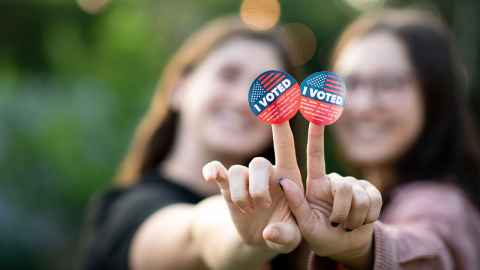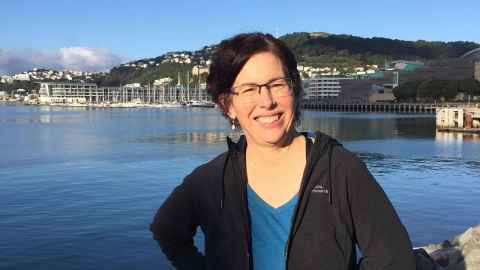Fighting for the youth vote in America
25 January 2024
Motivated to protect democracy and freedoms, young American voters are turning out to vote in higher numbers than ever before, according to a new book by University of Auckland historian Jennifer Frost.

A lot of hope rests on young US voters in this year’s all-important presidential election, says historian Jennifer Frost, an associate professor of American history at the University of Auckland, whose book “Let Us Vote!” Youth Voting Rights and the 26th Amendment is now out in paperback.
“In 2024, eight million new voters will be joining the electorate and since 2018, the votes of younger Americans have made a crucial difference in electing Democrats in federal and state elections; they also limited Republican gains when a ‘red wave’ was predicted in 2022 and they’re poised to do so again.”
That fact that all Americans can now vote from the age of 18 has been hard won and staunchly opposed for decades, she says.
“In the 1960s, as the movement to enfranchise 18 to 20-year-olds was growing, several states held referenda to lower the voting age from 21. Initiated by high school, college and university students, Michigan held one in 1966, but because of strict residency requirements, even students aged 21 and older enrolled in higher education away from their hometowns couldn’t vote in the referendum.”

Frost says a popular mechanism introduced by some Republican-dominated states to suppress the youth vote is removing student IDs from the list of acceptable forms of voter ID.
“Given many young Americans don’t have driver’s licenses or another acceptable form of ID, this disproportionately stops them from voting and lawsuits in six states are challenging these laws. In Idaho, for example, the plaintiffs argue this is a violation of the 26th Amendment, which lowered the national voting age to 18 and prohibited discrimination ‘on account of age’ in 1971.”
Another attempt to curb young voters over time has been residency requirements that only apply to students.
“To vote in Ann Arbor in 1966, for example, a student had to be married, have their parents in town, or ‘pledge to live in the city for years beyond their college experience’. These requirements didn’t apply to any other group in the electorate and were an injustice that lowering the voting age to 18 would do nothing to fix.”
She says city and county residents in many regions of the country supported these laws because they feared being overwhelmed by the number of resident college students casting ballots, like Amherst, Massachusetts, for example, a city of 13,000 residents with three campuses nearby: Amherst College, Hampshire College, and the University of Massachusetts, with a total of 21,035 students.
That fact that all Americans can now vote from the age of 18 has been hard won and staunchly opposed for decades.
In the early 1970s, students and their supporters fought back against voter suppression through legislation and litigation, including organisations like the National Association for the Advancement of Coloured People (NACCP), which lobbied to allow students to ‘designate their legal residence for voting purposes.’
But in 2024, Frost says these hard-won gains are by no means secure and still need to be shored up in innovative ways, not to mention the pressing issue of again winning the youth vote for the Democratic Party to ensure the issues young Americans care about, like climate change and abortion rights, are addressed by government at all levels.
“Credit for getting out the youth vote goes to young people themselves and to the many individuals and organisations dedicated to this vitally important cause,” she says.
“They carry on the legacy of the movement to win youth voting rights in the first place. It’s a victory we can’t take for granted but one we can and must continue to build on to protect our future.”
“Let Us Vote!” Youth Voting Rights and the 26th Amendment (NYU Press, 2022) by Jennifer Frost looks at key moments in youth voting history in America, and is now available in hardback, paperback and as an e-copy.
Media contact
Julianne Evans | Media adviser
M: 027 562 5868
E: julianne.evans@auckland.ac.nz